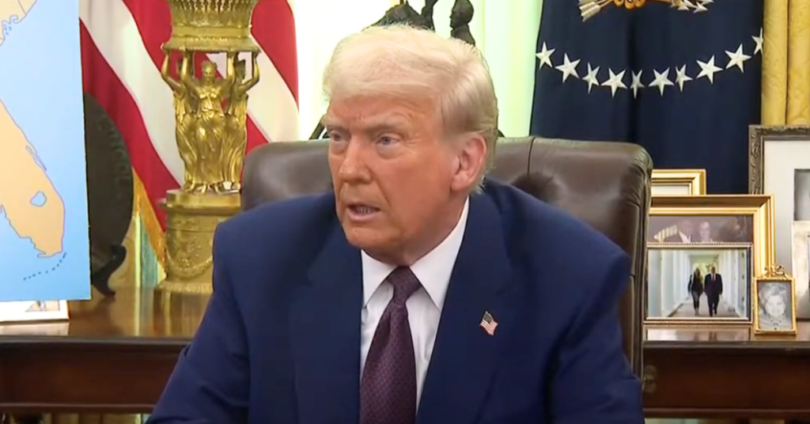‘This is the Big One’: Trump Launches Boldest Tariff Plan in Over a Century
In a sweeping move that echoes the bold protectionist policies of the late 19th century, President Donald Trump has signed an executive order implementing widespread “reciprocal tariffs” that will reshape America’s trading relationships with nations across the globe.
The new tariff structure, set to take effect within weeks, represents the most comprehensive overhaul of U.S. trade policy since 1890, when President William McKinley–whom Trump has dubbed the “tariff king”–imposed 50 percent tariffs on all manufactured goods.
“Tariffs are good, tariffs are great actually,” Trump declared during the signing ceremony, acknowledging that U.S. prices “could go up” as a result of the measure.
The president took to social media to herald the announcement, writing in all capitals: “TODAY IS THE BIG ONE: RECIPROCAL TARIFFS!!! MAKE AMERICA GREAT AGAIN!!!”
Senior White House officials revealed the extensive scope of the new policy, which goes far beyond traditional tariff considerations.
The order will address what the administration views as unfair trade practices, including “burdensome regulatory requirements,” currency manipulation and tax structures that potentially disadvantage American interests, the Daily Mail outlined.
“It’s patently obvious on its face that they are cheating us,” a senior White House official stated, per the outlet, highlighting the administration’s firm stance against what it perceives as global trade inequities.
Daily Mail noted that the “reciprocal” component of the policy will match foreign tariff rates imposed on U.S. exports – though the White House’s broad definitions provide significant latitude for the administration to increase tariffs on specific nations as deemed necessary.
This flexibility allows for targeted responses to various forms of trade practices that the administration considers detrimental to American economic interests.
The order encompasses numerous “non-tariff barriers” that the administration claims harm American interests. These include Value Added Tax (VAT) systems common in European nations, which Trump characterized as “brutal.”
Additional considerations include subsidies, regulatory requirements and exchange rates that “deviate from market value.”
The U.S. Trade Representative has been granted extensive authority to determine what constitutes “an unfair limitation” in trade practices, providing broad power to implement new tariffs across various sectors and nations.
This unprecedented level of discretion marks a significant shift in American trade policy implementation.
Daily Mail further noted that White House officials indicated potential flexibility in the policy, suggesting tariffs could be reduced through negotiations – similar to the recent pause in threatened tariffs on Canada and Mexico.
“The President is more than happy to lower tariffs if countries want to lower tariffs,” a senior official explained, adding that “tariffs, higher tariffs, are not the biggest part of the problem in many, if not most, cases.”
The announcement has already sent ripples through global financial markets, with Eurozone bond yields declining in anticipation of the details.
The timing of this major trade policy shift carries additional significance as Indian Prime Minister Narendra Modi prepares for an upcoming U.S. visit.
This latest trade measure follows Trump’s recent implementation of 25 percent tariffs on steel and aluminum, along with 10 percent tariffs on Chinese goods.
The administration has temporarily suspended plans for 25 percent tariffs on Canada and Mexico, America’s primary trading partners, demonstrating a willingness to negotiate while maintaining a firm stance on trade reform.
Scroll down to leave a comment and share your thoughts.


Leave a Comment